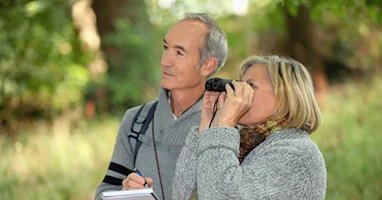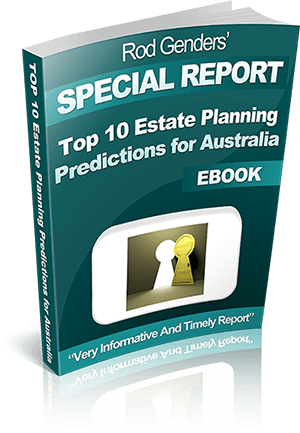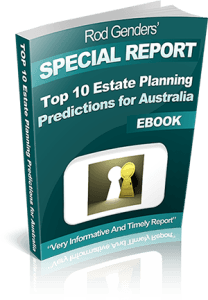Rod Genders is a senior Australian lawyer specialising in Wills and Estate Planning, Probate and Estate Administration, Trusts and Guardianship and Inheritance Claims and Contested Estates in South Australia. His boutique specialist law firm, which was founded on 1848, is one of the oldest and most respected in Australia. Rod is an international author and speaker. Rod is the 3rd generation of Genders in the law and has been practising specialised law since the mid 80’s. He has acted as counsel or consultant to in excess of 50 other firms around Australia. Rod holds the SA state record for the highest ever personal injury award of damages, and has been involved in several of the largest personal injury claims in Australian legal history. For over 10 years he served on the Council of the Law Society of South Australia and is a senior member of its Succession Law Committee. Rod was a founding committee member of the South Australian branch of the London-based Society of Trusts and Estate Practitioners (STEP) for 8 years and was the founding Chair of the international STEP Digital Assets Special Interest Group. For over 25 years Rod has chaired a private committee enquiring into the affairs of protected persons. He is a member of the Law Council of Australia, and a member of its Succession and Elder Law Committee.
How many million-dollar lawsuits against homeless people do you hear about? None. That’s because lawsuits aren’t filed against poor people; they are filed against those with enough assets to make the expense of litigation worthwhile.
We all need to maintain an acute awareness of what can happen in ‘the modern jungle.’ None of us want bad things to happen to us and our families, such as bankruptcy, creditors, predators, gold-diggers, the ATO… but we need to keep our guard up against others who may not share our foundational assumptions of fair play and justice. Other, perhaps more aggressive ideologies, could run right over our sweet & trusting natures if we let them
In our shrinking world where travel and communication are faster and easier than ever before, it seems that ‘foreigners’ are being officially targeted by every government in the world.
The issue is everywhere in the media at present. Foreign corporations not paying enough local tax. Cashed-up foreigners trying to buy big chunks of our real-estate. From anti-migration walls to offshore detention facilities, it seems that the people holding the purse-strings are blaming foreigners as the reason for our economic decline.
So how likely is it that the Government would try to reduce the pension entitlements for Australians from migrant backgrounds as part of a budget-savings measure?
In Australia over the last 30 years, any spending in pursuit of rental income from an investment property is tax-deductible, unless the spending is of a capital or private/domestic nature. This is known as ‘negative gearing’.
The owner can claim a deduction for the cost of repairing an investment property, but not initial repairs when the property was first purchased.
Some commentators think that negative gearing has distorted the housing market. They point to negative gearing as one of the main factors in housing affordability having halved in real terms over the last 30 years since negative gearing has been in place.
Earnings from superannuation accounts for retirees in the pension phase are currently taxfree.
In April 2015 the Federal Opposition (Labor’s Bill Shorten) proposed that Super earnings $75,001 and above be taxed at 15 per cent. The Labor Party estimates that would affect about 60,000 people and raise $9.2 billion over 10 years.
I predict that the Government will introduce a threshold above which extra rates of income tax will apply to Super income. Whether that threshold is $75,000 or $150,000 or some other number, I don’t know. But I’d be willing to bet that it’s too big a honey-pot for governments to resist for much longer.
At present, the family home (principal place of private residence) is exempt from Capital Gains Tax. Some analysts have suggested that this concession is skewed towards the wealthiest in the community, and there is a push to remove this exemption for the most expensive residential properties.
In 2009 a report by the Brotherhood of St. Laurence and the Australian Housing and Urban Research Institute claimed this CGT exemption is worth on average $10,000 a year for the wealthiest 20 per cent of home owners, but worth just $1200 a year for the bottom 20 per cent of households. The suggestion is that it is unfair that those on the highest incomes are getting much more benefit than anyone else.
During its last term in office, the Federal Labor party introduced a superannuation charge for people earning more than $300,000 annually, taxing these people’s contributions at 30 per cent, while everyone else pays 15 per cent on contributions.
In April 2015 the Federal Opposition (Labor’s Bill Shorten) proposed to lower the threshold to double the superannuation tax on contributions to 30% for many Australians to raise more than $5 billion over a decade.
In 1986, 3 per cent superannuation was awarded by the then Conciliation and Arbitration Commission as part of a productivity and wage package. Over time that increased progressively. For a long time it was stuck at 9%. It is currently 9.5% in 2015–16, and incremental increases are legislated each subsequent year to get to 12% in 2019–20.
In the 1995-96 Budget, the then Treasurer outlined the Keating Government’s proposal to further increase superannuation contributions to 15 per cent.
In this “immediate gratification” society, it doesn’t take much imagination to see that governments don’t trust individuals to behave in a way that gives them sufficient savings for their own needs later in life. This obviously has consequences for the public purse, necessitating subsidisation by the state (at taxpayers’ expense). For governments, mandatory savings schemes like Super are also a mechanism to shift reliance on future tax-payer funded pensions to private savings.
On 15 October 2009 the most senior tax-policy advisor to the Australian Federal Government, Dr Ken Henry (Chair – Australia’s Future Tax System Review Panel and Secretary to the Treasury) gave an Address to the Committee for Economic Development of Australia.
In that address he identified 6 areas of future opportunities and challenges governments will need to address in respect to taxation. At the very top of his list was: “the ageing of the population, posing challenges for the financing of retirement incomes and of increasing health and aged care needs”.
Dr Henry said that taxes levied on broader bases would be more efficient policy tools, probably more equitable and certainly more transparent ways of raising revenue. Without such tools, governments would otherwise be compelled to continue to rely on bad taxes to achieve their spending objectives.
The age pension was introduced by Labor prime minister Andrew Fisher in 1908 as a safety net for Australians in the last years of their life. When it was first established, the age for eligibility was set at 65 – when the average life expectancy for Australian men was 63. It was not expected that most people would live long enough to receive it, and those they did would not get it for very long.
With advancements in health care and medical science, our life expectancies have risen dramatically, and the cost of the age-pension has ballooned into the single largest federal program.
It cost $36 billion in 2013, almost 10 per cent of the entire Federal budget, a bill that has risen by $13 billion over the past decade as Australians became healthier and lived longer. Annual administration costs are estimated at $1 billion a year.
OK, OK – I admit this one is not directly related to estate planning. And I also freely concede this one is more speculative then my other predictions. However I stand by it.
At the moment, some employers do not have to withhold PAYG tax or SGC for some workers, ESPECIALLY if those workers are not classified as permanent employees: ie casual workers; workers who work below a threshold number of hours per week; workers earning less than a certain threshold amount of income; independent contractors.
There is an administrative burden for businesses to be the collection-agent for the Government, and so if a business can legitimately arrange its affairs to minimise that burden, it will probably do so. So… businesses might insist on categorising workers as independent contractors, and so leave the issues of SGC & PAYG to the worker to sort out.

















